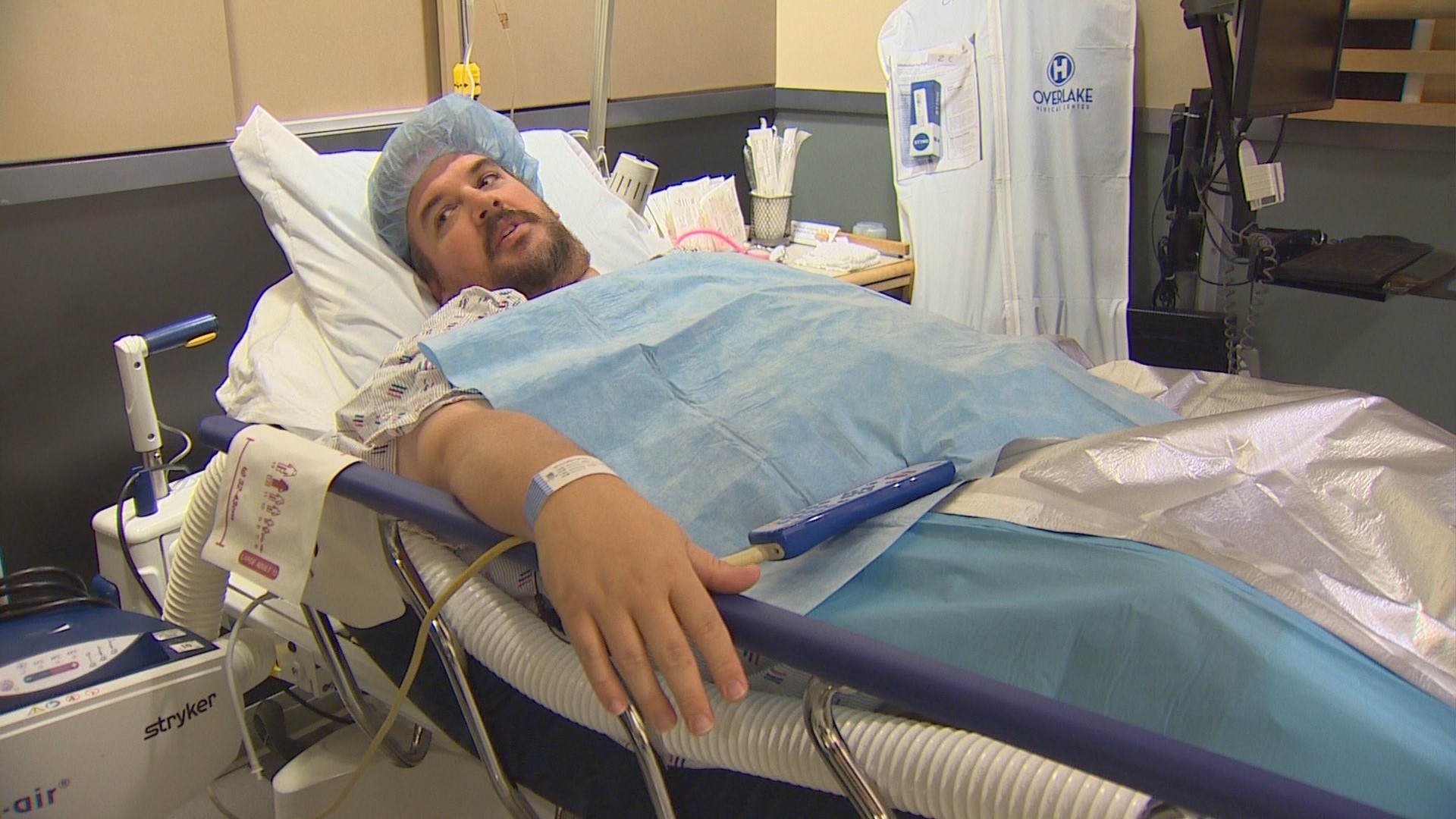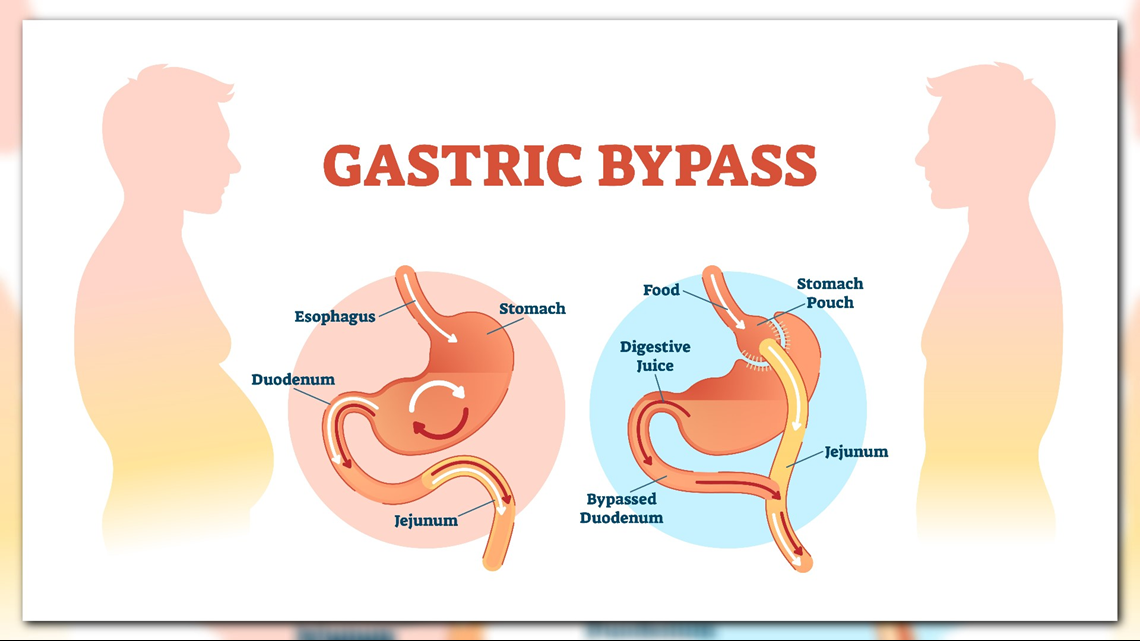How gastric bypass can give patients a second chance
At 41, Chris Zito was over 400 pounds and needed a second chance at life. Like many other Americans, he needed help to get his weight under control.

Taking the first step
Over 93 million adults in the United States are obese. It’s the second leading cause of preventable death in the country.
Chris Zito was one of those Americans.
Like so many others, diets and exercise didn’t work for the over 400-pound, 41-year-old TV producer. Nothing kept him motivated.
Less than 5 percent of people with severe obesity, that’s 80-100 pounds or more weight to lose, are not able to do it with just diet and exercise according to the Center for Disease Control and Prevention.
“I thought when I got engaged, that would be the motivation I need to lose the weight -- didn't work,” he remembered.
He couldn’t go to the park with his 4-year-old daughter without being out of breath. Walking up the stairs at work was a challenge. Even getting up from a chair was getting harder.
Six months ago, he decided to undergo gastric bypass surgery. A procedure to shrink his stomach to the size of an egg.
Over the course of 10 years, three different doctors had recommended he have the surgery.
Now, it was time.
“I'm not diabetic yet. I don't have heart problems yet. I don't have liver problems yet. But they're all just on the horizon.”
When Zito’s dad died earlier this year from stage 4 colon cancer, he knew he was facing the same risk.
“I want to make sure my kid doesn't wonder -- doesn't have to worry about that kind of stuff,” he said.
Dr. Thien Nguyen with Overlake Medical Clinics Metabolic and Bariatric Surgery Center met with Zito. He would perform the Roux-en-Y gastric bypass surgery, one of the most common weight loss procedures in the country.
Patients typically lose about one-third of their body weight within 18-24 months of this surgery according to Overlake.
To qualify, Zito had to lose 10 percent of his body weight. He lost the 40 pounds by eating three protein shakes, a Lean Cuisine and a cup of vegetables a day.
It was hard, but he knew he didn’t have another choice. He knew he couldn’t do it on his own.
“If I don't do something drastic, and if I don't supercharge my weight loss, which is what this surgery is going to do, how long do I have?”
Chris' second birthday
Friday, August 3, 2018, was Zito’s “second birthday.”
He entered Overlake Medical Center in Bellevue as an almost 400-pound man, ready for a second chance at life.
During the three-hour laparoscopic procedure, Dr. Nguyen connected Zito’s small intestine to a new smaller stomach pouch. Food would now travel down the esophagus into the pouch and then right into his intestine. The smaller stomach limited the amount of food Zito could eat, and his body would absorb fewer calories and nutrients.


Nguyen considers this to be a life-saving treatment. He's seen many of his patients' health change dramatically, with reductions in conditions like high blood pressure, heart disease and diabetes.
“The surgery is the only long-term treatment fix/solution to someone who's trying to lose 100 pounds,” said Nguyen.
Non-scale victories
During recovery, Zito had to change his relationship with food altogether.
For the first two weeks after surgery, he could only sip liquids and take small bites of purees. A stark contrast from the entire pizza he used to eat in one sitting.
Zito also started taking vitamins and supplements, which he’ll need for the rest of his life because his procedure makes it hard for his body to digest nutrients.
Zito lost 15 pounds in the first 12 days after surgery. He didn’t have any pain or side effects and could tell his stomach was smaller.
“When I took too big of a drink of water, it got real tight,” Zito said.
After a month, he could walk up the stairs at work without pain. There was less stress on his knees.
He was down to 330 pounds just two months after surgery and able to work out better than ever before.
“I feel like before the surgery, and I was on the treadmill, I'd be doubled over, gasping for breath,” he said.
Zito began to see “non-scale victories.” He wore jeans for the first time in years and got rid of his 4XL-sized clothing.
“I don't care if it's a booth or a table anymore -- there's a non-scale victory for you. The thought of traipsing around a farm and chasing my daughter around a corn maze that doesn't give me any pause.”
He said his most significant victory so far was getting back to a sport he loved: golf.
Zito still has a long way to go. He’s only halfway to where he wants to be, but he says the journey continues to motivate him.
KING digital journalist Kelsey Caulfield contributed to this report.
